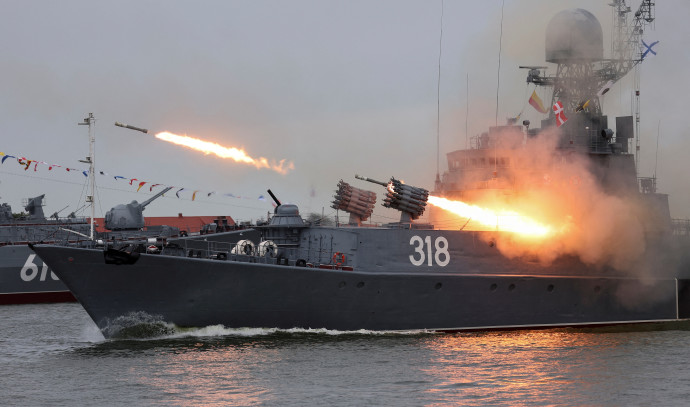The Russian Navy’s Black Sea Fleet has welcomed a new warship, the missile corvette Tsiklon, TASS reported, citing the Russian Defense Ministry last week.
Other reports have noted that the Tsiklon warship will be able to fire hypersonic missiles.
The Tsiklon was officially handed over to the Russian Navy for service in a ceremony on July 12 under the auspices of Admiral Nikolay Yevmenov, the Russian Navy commander-in-chief.
The ship is the latest in a number of similar missile corvettes reportedly set to replace the Russian Navy’s current Buyan-M ships.
What are the Russian Navy’s new missile corvette warships?
The Tsiklon is a Project 22800 Karakurt-class missile corvette warship manufactured at the Zaliv Shipyard in Kerch.
Like all Karakurt-class ships, the Tsiklon is designed for missile uses and is meant to be armed with Kalibr and Oniks cruise missiles.
However, the Tsiklon is also reportedly equipped with the Pantsir-M close-in weapon system missiles. This would allow it to defend against incoming aircraft and missiles.
Essentially, it can let the ship defend itself more efficiently from missiles, drones, aircraft, and even other ships, giving it more operational flexibility.
However, according to a report by the Ukrainian military portal Militarnyi, the Tsiklon is also equipped to launch Zircon hypersonic missiles.
In late June, Yevmenov told Russian news outlet RIA that all new Russian Navy corvettes and frigates will be armed with Zircons.
This comes just seven months after the missiles were first deployed in January 2023, with Russian media reports claiming that they fly at speeds of Mach 9 – faster than the US Navy’s Harpoon and Tomahawk missiles.
“This ship, armed with ‘Zircons,’ is capable of delivering pinpoint and powerful strikes against the enemy at sea and on land,” said Russian Defense Minister Sergei Shoigu in January back when the first Zircons were deployed on the Admiral Gorshkov frigate.
Karkakurt-class warships have been integrated into the Russian Navy since 2018, with the goal being to have a fleet of 16 within the coming years.
Reuters contributed to this report.



